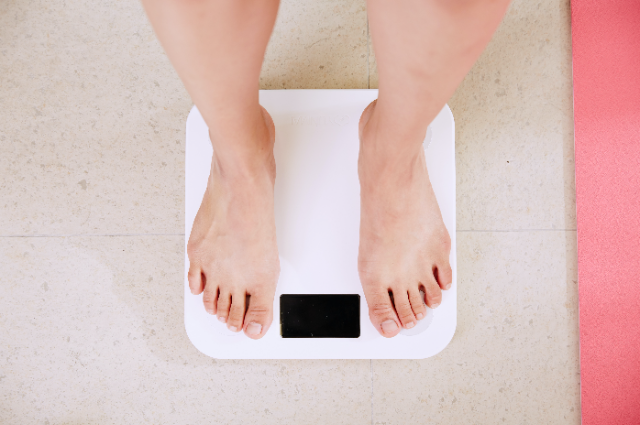
In a world flooded with media messages defining beauty norms and ideal body images, it’s not unusual or uncommon for people to struggle with self-acceptance. The concept of body positivity has emerged as a powerful movement challenging these societal norms and promoting self-love for everyone. It serves as a constant reminder that each individual deserves love, acceptance, and respect, regardless of how different they look from what is considered normal.
Defining Body Positivity
At its core, body positivity is a mindset that celebrates the inherent worth of every body, regardless of its size, shape, skin tone, gender, or physical abilities, It focuses on emphasizing the functionality and health of the human body, rather than the superficial aspects of appearance. In simple words, it challenges the toxic notion that beauty is a one-size-fits-all construct.
Body positivity goes beyond our physical attributes alone; it extends to addressing issues related to race, gender, sexuality, and disability. This movement seeks to uncover the damaging impact of media messages on our perception of food, exercise, clothing, health, identity, and self-care. It recognizes that our judgements are often shaped by these widespread influences.
Defining body positivity also involves acknowledging that everyone is valuable, regardless of their appearance. It’s about encouraging individuals to be kind to themselves, prioritizing their mental and emotional health fostering a sense of inner peace and contentment. It empowers people to appreciate their bodies not only for how they look but for what they can do, emphasizing the importance of functionality and health. Furthermore, it emphasizes the significance of celebrating individuality and unique beauty, challenging the harmful practice of comparing oneself to unrealistic beauty standards. In simple words, body positivity is about loving and accepting yourself just as you are.
Body Image and Mental Health
Body image refers to an individual’s perception of their own body, which may often differ significantly from their actual appearance. Feelings, thoughts, and behaviors linked to body image have a profound impact on one’s mental health and self-esteem.
How we see and feel about our bodies is closely connected to our mental health. A positive body image encourage confidence and contentment, while a negative one can lead to self-esteem issues, self-doubt, anxiety, depression, and even harmful behaviors such as eating disorders.
The media’s portrayal of unrealistic body ideals and societal pressures to conform to these standards contribute significantly to negative body image, falsifying one’s self-view.
Recognizing and addressing how we feel about our bodies is important for healthier mindset. This involves accepting ourselves for who we are, understanding media influence, and effective coping strategies to foster a positive relationship with our bodies.
Distinguishing Body Positivity from Fat Liberation
Distinguishing between body positivity and fat liberation involves understanding their distinct emphases and aims.
While body positivity primarily revolves around promoting self-esteem and altering individual perceptions of one’s body, fat liberation takes a broader perspective. It questions whether self-esteem alone is the core issue, arguing that external societal influences, including those tied to factors like body size, gender, and appearance, have a significant role in shaping self-perception.
Fat liberation seeks not just to boost self-esteem but also to dismantle systemic barriers and discrimination faced by fat individuals and other marginalized group, such as transgenders and disabled individuals. This perspective emphasizes practical aspects, such as accessibility, acceptance, and equal treatment, rather than personal self-esteem, making it a call for broader societal change.
The Evolution and Co-opting of Body Positivity
The evolution of body positivity has been both remarkable and complex. It began as a radical social movement, initiated by those furthest from conventional beauty standards. It was a demand to be seen, heard, and accepted without the need for self-alteration. However, it has undergone significant transformation over the years. Originally intended to empower individuals of all shapes, sizes and appearances, body positivity was aimed to boost self-esteem and redefine beauty standards. But, as it gained momentum, it faced the risk of being co-opted by mainstream media and industries. Some argue that it has been watered down and commercialized, with messages that once radical becoming diluted and used for profit. Consequently, those who started the movement- larger women, women of color, queer women- often do not reap the benefits of its current mainstream success.
Where Do We Go From Here?
From body positivity perspective, the question of ‘where do we go from here?’ holds great significance. It’s crucial to continue challenging unrealistic beauty standards and promoting self-acceptance. This movement should remain inclusive, recognizing that people of all backgrounds, sizes, genders, and abilities can struggle with body image issues. Education about media literacy and the harmful impact of photo editing and unrealistic portrayals of bodies should be a priority. Moreover, fostering a supportive environment that encourages open conversations about body image and mental health is essential. While body positivity has made strides in reshaping our perception of beauty, its journey should continue, striving for a world where everyone feels valued, confident, and comfortable in their own skin.
But to truly embrace body positivity and promote positive change, we must engage in self-interrogation. This involves examining our biases, especially regarding fat, transgender, and disabled individuals. Explicit body shaming may have decreased, but implicit biases persist and can lead to significant harm.
The path forward is not paved with just superficial affirmations and pep talks. It requires a commitment to justice, dismantling systemic oppression, and addressing the implicit biases that persist in our society.
